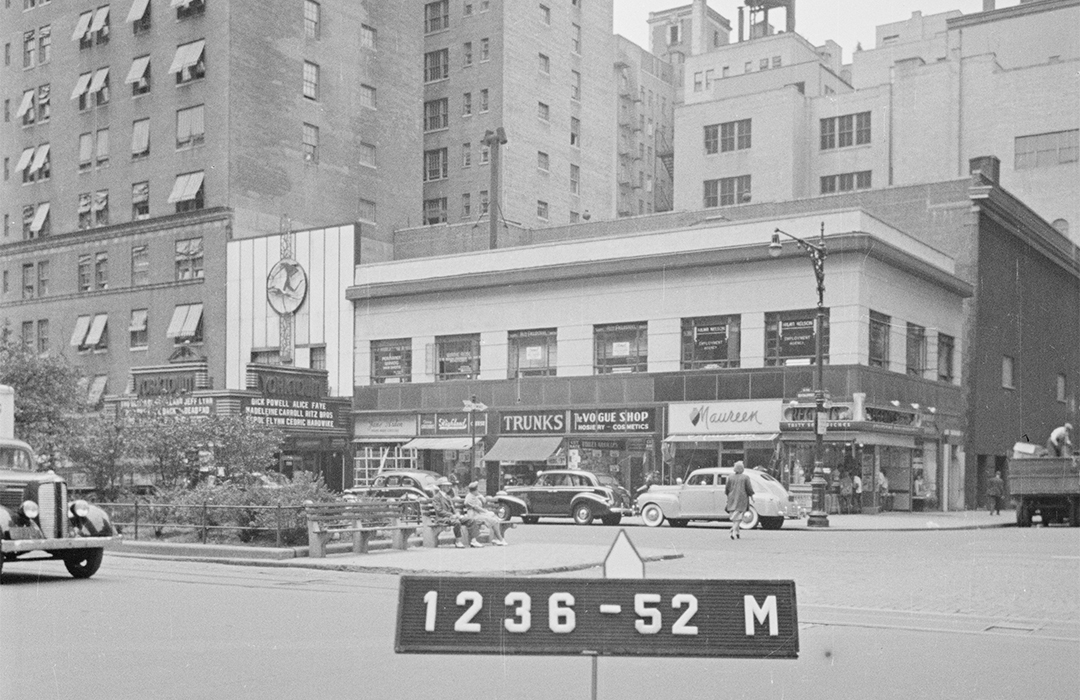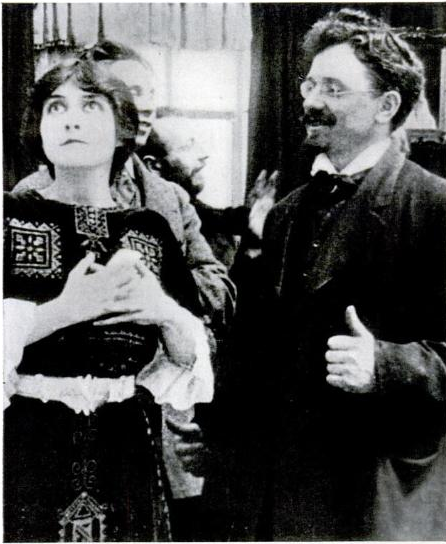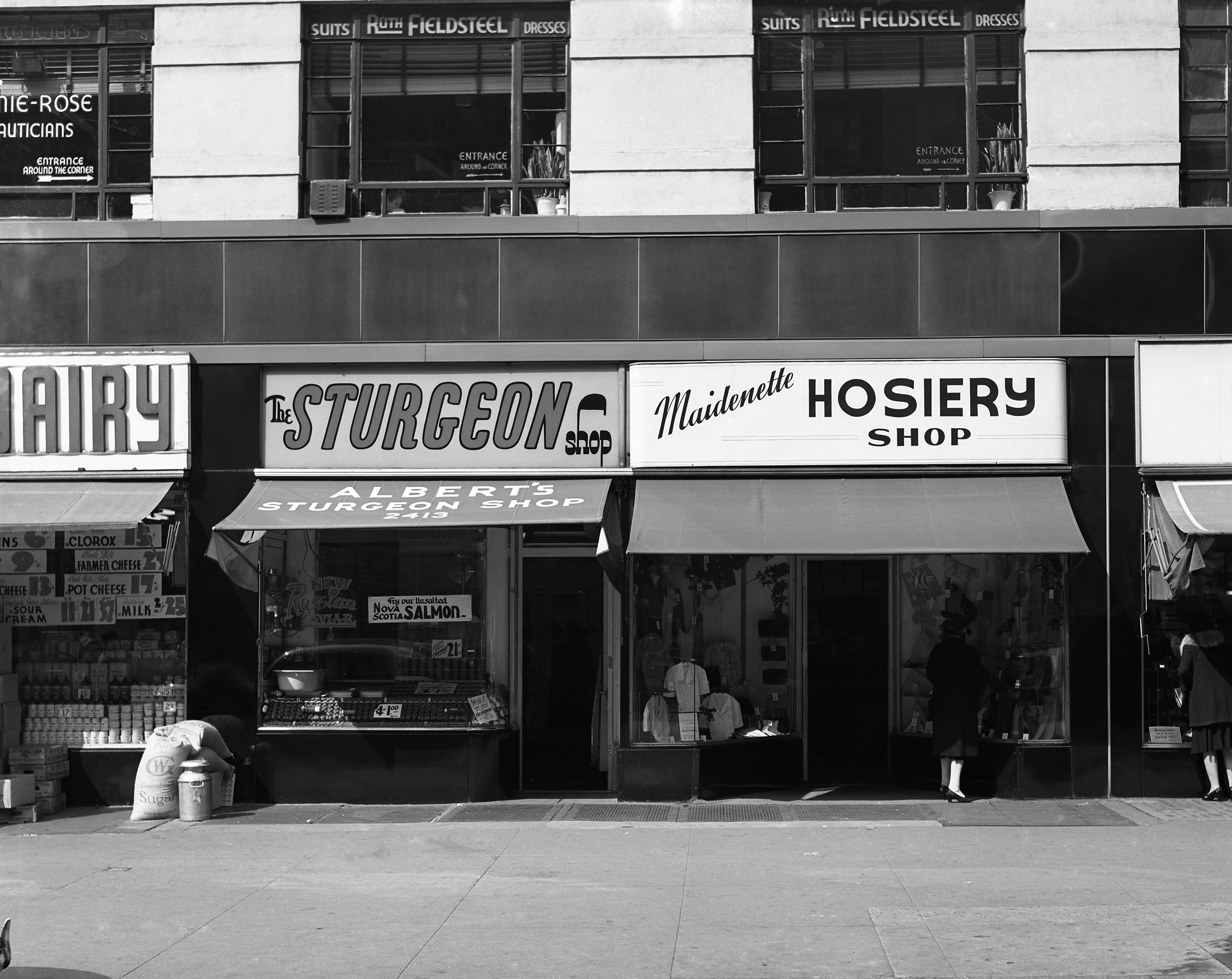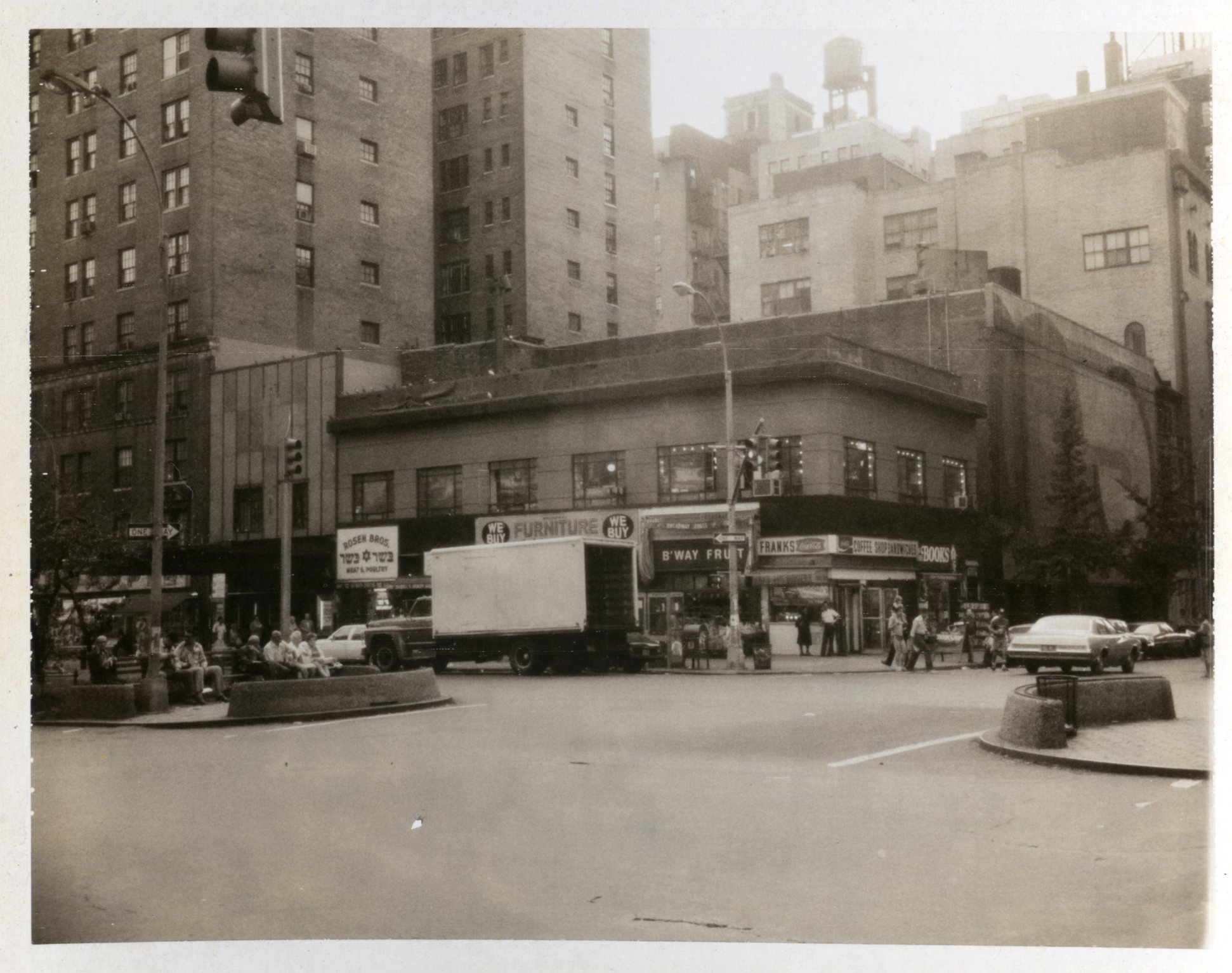
2409-2415 Broadway
by Tom Miller
In 1913 the Trio Amusement Corporation hired the architectural firm of Rouse & Goldstone to design a motion picture theater at the southwest corner of Broadway and 89th Street. The two-story structure was completed the following year, with stores lining the sidewalk level along Broadway, and a series of fully arched windows on the second floor. The Adelphi Theatre was entered under a glass-and-metal marquee within a two-story arch at the southern end of the building.
The theater opened on August 26, 1914, with the film My Official Wife, touted in an advertisement as a “big Vitagraph feature success.” The ad tagged the Adelphi “The Picture Playhouse.” (Vitagraph Studios, located in Brooklyn, was the most prolific silent film production company at the time.)
On March 9, 1919, burglars attended the last screening of the day and hid until the last of the audience had departed, and the theater was locked. The following morning The Evening World titled an article “Theatre Safe Cracked By Yeggs; $3,700 Gone.” The cleaning woman had arrived at 8:00 that morning to find the office safe in the middle aisle, blown into “a piece of junk,” as worded by the writer. The “yeggmen” had torn up the heavy carpeting from the aisle and wrapped the safe to muffle the noise of an explosion. They escaped through the stage entrance with $1,200 in cash and $2,500 worth of Liberty Bonds—a significant $58,000 haul today. The newspaper said, “No finger marks were discovered by the police.”
The “yeggmen” had torn up the heavy carpeting from the aisle and wrapped the safe to muffle the noise of an explosion.
In 1933 the Adelphi Theatre was leased to the Yorktown Theatre Corp. The firm promptly brought in the architectural firm of Boak & Paris to give the Edwardian building a significant updating. Partners Russel M. Boak and Hyman F. Paris had just designed the Midtown Theatre ten blocks north at 2626 Broadway. Their treatment of the entrance of what would now be called the Yorktown Theatre was a near match to the Midtown—with prominent geometric lines and a large, colorful terra cotta medallion of Diana the Huntress and her dog.
Six years after the remodeled theater opened, a near disaster occurred. Fire broke out in the second story in the early morning hours of January 24, 1939. The smoky blaze routed the residents of the apartment house to the south, at 255 West 88th Street. The second floor of the Yorktown Theatre building was gutted, and several of the ground-floor shops were damaged by water and smoke.
In March 1960, a press release announced “Brandt’s Yorktown Theater (900 seats) has just been purchased by Arjay Enterprises, Inc.” Renamed the New Yorker, it opened on March 17, 1960, with a re-release of the 1944 film Henry V, starring Laurence Olivier. The New York Post critic Archer Winsten wrote in June of that year, “The New Yorker is a sizeable theater and can hold many people comfortably. At present, it seems to be by far the most exciting film theater in town, not just for what it shows, but for the departures and promise of its future. Obviously, it’s the only theater with new and fresh ideas.” The New Yorker was experimental, showing a mix of vintage films, art films, and current productions.
Later that year, in August, the 1950 film Sunset Boulevard starring Gloria Swanson and William Holden played. In her 2009 book, The New Yorker Theater and Other Scenes From a Life At The Movies, Toby Talbot wrote:
On August 10, 1960, when Gloria Swanson in white ermine, white limousine, and black chauffeur showed up to see Sunset Boulevard—about a star dreaming of a comeback for millions who’d never forgiven her for deserting the screen—she…promptly checked her aging self on the mirrored wall, still angling for the best profile.
Woody Allen chose the New Yorker Theater for a scene in his film Annie Hall.
In 1977 writer, actor, and director Woody Allen chose the New Yorker Theater for a scene in his film Annie Hall. In it, Allen, as character Alvy Singer, and Diane Keaton, as his girlfriend, wait in line to see Marcel Ophüs’s The Sorrow and the Pity and get into a verbal confrontation with a self-proclaimed film critic.
Two years later, the New Yorker Theater was acquired by the Walter Reade Organization, which “twinned” it to become the New Yorker 1 and 2.
In the early 1980s, a terrific storm pried the Art Deco relief of Diana off the façade and it crashed to the top of the marquee where it remained. The incident was almost a foreboding of what was to come. In 1985 the mishmash of shops in the building–a beauty salon, a butcher shop, a clothing boutique, a fruit market, a coffee shop, and a travel agency—all received legal notices that they would have to vacate by the end of June. Daniel Talbot told The New York Times simply that the building was sold, and that the leases contained “a normal demolition clause.” Later, in May, it was disclosed that the building would be razed for an apartment building.
Tom Miller is a social historian and blogger at daytoninmanhattan.blogspot.com
BUILDING DATABASE
Keep Exploring
Be a part of history!
Think Local First to support the businesses currently at 2409-2415 Broadway aka 250 West 89th Street:





